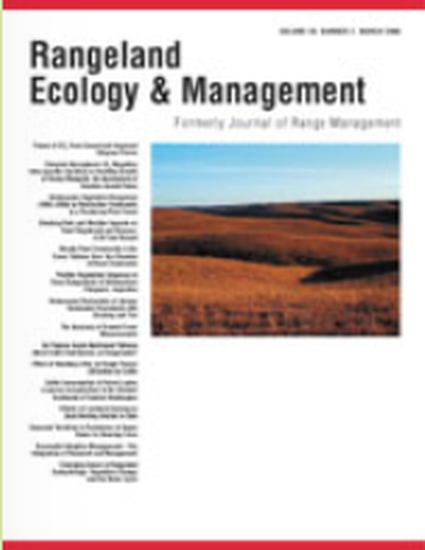
Article
Effects of Livestock Grazing on Duck Nesting Habitat in Utah
Rangeland Ecology & Management
(2006)
Abstract
Periodic vegetation disturbance is an important yet controversial tool for waterfowl managers. Some have reported livestock grazing removes residual vegetation and thus is detrimental to nesting ducks, and others argue that such disturbance is necessary to maintain grassland health. We evaluated the impact of winter livestock grazing on duck nesting at Bear River Migratory Bird Refuge, Utah. During winter 1999, 6 experimental plots were grazed by cattle and 6 were ungrazed; in winter 2000, 8 plots were grazed and 8 were ungrazed. All grazing treatments were conducted during 15 November–15 March and averaged a stocking rate of 9.5 animal unit months/ha. During the following spring nesting season, we measured visual obstruction readings (VOR) on grazed and ungrazed sites. Although VOR on ungrazed sites were greater than those on grazed sites, this difference became less important as the nesting season progressed. Winter grazing impacted the nesting habitat of early-nesting ducks such as mallards (Anas platyrhynchos), but not that of late-nesting species such as cinnamon teal (Anas cyanoptera) and gadwall (Anas strepera). When using livestock grazing to manage grasslands, waterfowl managers should consider their management goals, the species composition of breeding duck populations, and environmental conditions.
Disciplines
Publication Date
2006
DOI
https://doi.org/10.2111/05-118R1.1
Citation Information
Terry A. Messmer. "Effects of Livestock Grazing on Duck Nesting Habitat in Utah" Rangeland Ecology & Management Vol. 59 Iss. 2 (2006) p. 208 - 211 Available at: http://works.bepress.com/terry-messmer/240/
